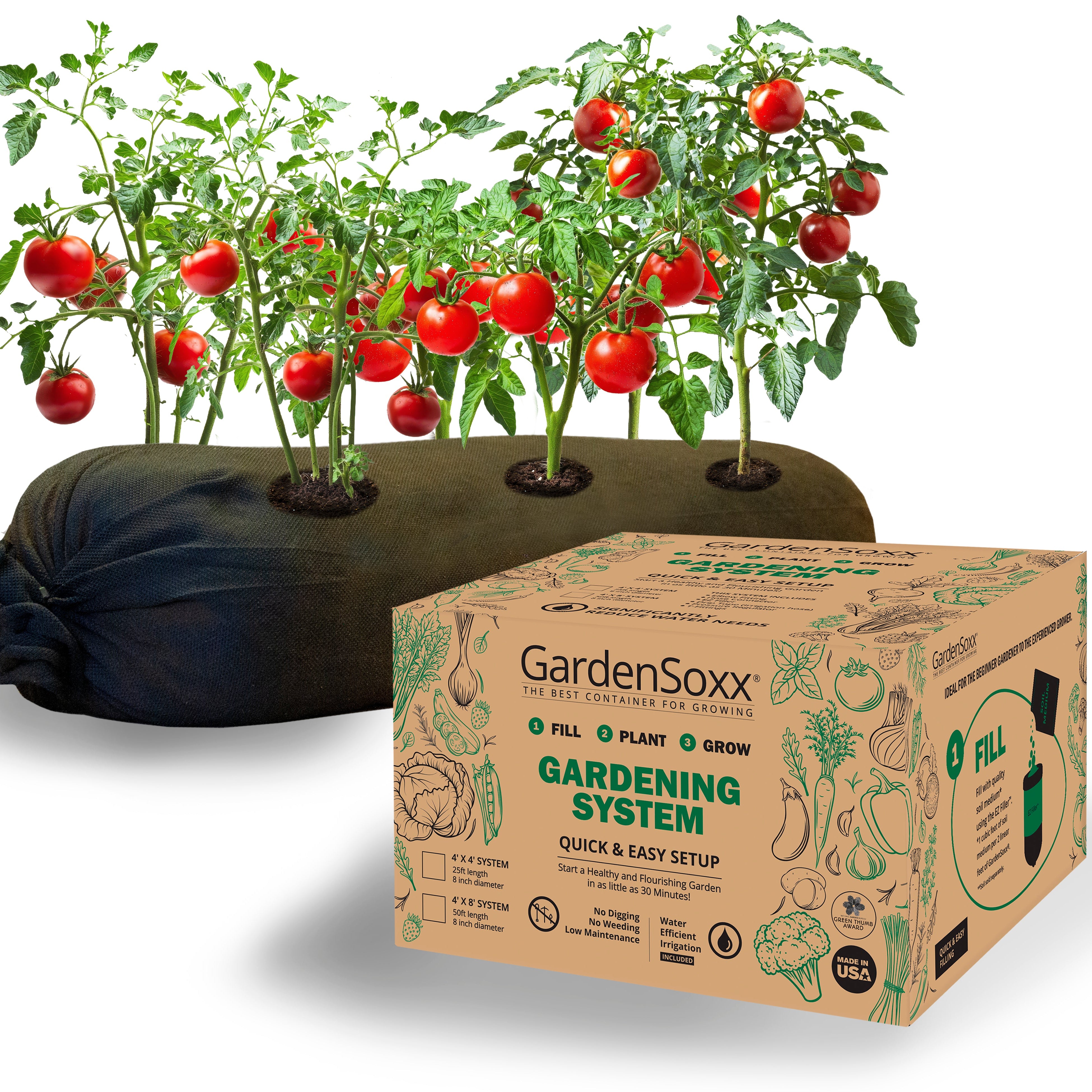Green Beans
Even beginner gardeners will easily learn how to grow green beans. This low-maintenance, high-production garden crop is a common staple in many home gardens. Beans come in two basic varieties - bush beans or pole beans. While very similar in many respects, the main difference between them is the seed-to-harvest time and the space they require to grow.
Green Beans are an excellent source of protein, vitamins, folic acid and fiber. They make a simple and nutritious side-dish for any meal, and are a great addition to soups and stir fries. While they can be eaten raw, it is recommended to cook green beans before consuming as any raw legume can be difficult to digest.

Growing green beans in GardenSoxx® | Plant Family: Fabaceae
Different Varieties of Green Beans
While not all different varieties of green beans are actually green, they are all relatively easy to grow and mostly very prolific plants. As mentioned above, green beans come in two main categories: pole beans or bush beans, each with a wide range of different cultivars to choose from.The mild-flavored Blue Lake pole green bean is early to mature and excellent for canning or pickling. Ready to harvest is about 60 days, this reliable cultivar will need a trellis and is a great option for the garden.
A bright yellow bushing variety, the Goldrush bean grows quickly and easily, producing an abundant harvest of crispy and flavorful, stringless bean pods. Excellent for beginners!
A popular choice for home gardeners or larger-scale growers, the Provider is a high-yielding classic green bush bean that produces very uniform pods and freezes especially well. This variety typically produces a harvest in as little as 50 days.
For a fancier choice, the Maxibel offers that higher-end “french bean” look and flavor that is popular in trendy culinary applications. High-producing and delicious, this bush bean is ready to pick in about 60 days.
To add a pop of color to the garden, opt for the Purple Peacock - a warmer season purple green bean that grows up a trellis and is quite productive all season long. While the beans will turn green when cooked, their purple hue makes a stunning garden display while they grow.
Nutritional Information For Green Beans
Nutritional Facts - per 100/g
| Nutrient | Amount | % Daily Value |
|---|---|---|
| Calories | 31 | - |
| Total Fat | 0.2 g | - |
| Sodium | 6 mg | - |
| Potassium | 211 mg | - |
| Dietary Fiber | 2.7 g | - |
| Sugar | 3.3 g | - |
| Protein | 1.8 g | - |
| Vitamin C | - | 20% |
| Iron | - | 5% |
| Vitamin B6 | - | 5% |
| Magnesium | - | 6% |
| Calcium | - | 3% |
How to Grow Green Beans in Your GardenSoxx®
Bush beans mature more quickly than pole beans and will produce a harvest sooner. They are planted in rows and do not require a trellis or support to produce an abundant harvest. Both varieties of beans are excellent additions to the garden as they will help to fix nitrogen in the soil. For gardens with a bit less space, we recommend bush beans as they have a smaller growing footprint than pole beans, but the harvest may not be as abundant.
Seeds can be sown directly outdoors, once the soil warms to at least 16 C (60 F) and the risk of frost has passed, plant seeds about 1 inch deep, 6 inches apart in rows. Drip irrigation or soil watering is recommended for bush beans so the foliage stays relatively dry, reducing the risk of fungus or disease. For optimal growth, bush beans should be planted in an area that receives full sun.

Green Beans Seed to Harvest Time: 7-8 Weeks - Note that bush bean varieties will produce a harvest all at once.
How to Harvest Green Beans
When beans are between 5-7 inches long, and the pods have thickened but are not yet bulging. A good indication that beans are ready to harvest is that the pod “snaps” when broken in half.


















































